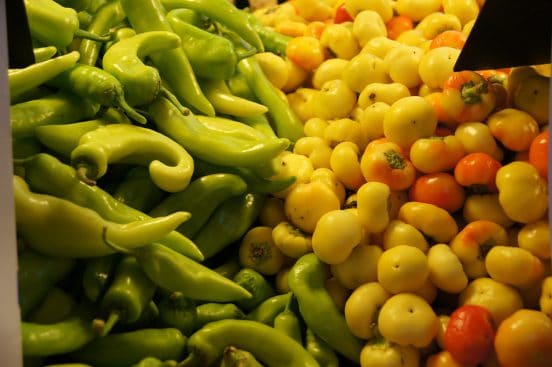This is just one of those things… Everyone knows, at least implicitly, that there is quite a variety among the chile peppers. Yet, especially when it all just seems to be about the ‘heat,’ everyone seems to think that they are all basically just the same.
My “favorite” example are chocolates with chile pepper. In the world of chocolate-making, there has been a trend towards the use and description of certain varieties of cacao beans, sometimes down to the terroir of different plantations. And yet, when chilli comes into play, it’s still common to find chocolates that do not say anything about the variety or varieties of chilli that were used. Sure, it’s possible to make blends where it doesn’t matter so much, same as with the cacao itself, but it’s not bad to know.
After all, taking the great diversity of chilli that exists into account, not mentioning anything other than “chilli” is rather like using “alcohol” and never mentioning if it was vodka or wine, rum or whisky. Who’d ever do that?
Interestingly, in this area, a gap has opened up between the USA and Europe. Chilli chocolates from the USA, by now, generally do state what varieties were used, at least in the list of ingredients; those from Europe tend not to say anything other than the (0.002%, as I recently saw in one example) content of chilli.
Now, it is somewhat understandable, given that chilli tends to be employed only to provide a bit of pungency. When it comes mixed with alcohol and black pepper, or even both, its own aromas (and therefore, the varieties) don’t matter so much. Take Coppeneur’s Chilli & Whisky, for example…
Then again, better chocolate makers should have a more discerning taste, and they could thus produce chocolates that are more interesting and distinctive than they now become. BruCo’s “Ancho” chocolate is an excellent example for the use of a distinct variety of chilli because of its characteristic flavor and pungency giving an equally distinct kind of chocolate.
We don’t need to go into the finer points of chilli connoisseurship to realize that it’s not all the same.
Bell peppers are also, if you want to brush it all over in broad strokes (and be biologically correct), a kind of chilli. It’s just that the pungency’s been bred out. There’s no pungency in a Venezuelan ají dulce or a NuMex Suave, either, but they are not of the species Capsicum annuum, but rather Capsicum chinense. Thus, when it comes to flavor, they are (like) Habaneros with their distinctly fruity, tropical aroma. Capsicum baccatum, the more classical South American/Andean ají, has notes of berries, and their red and yellow varieties differ in taste again.
Sure, if all you know is “chilli” of the bird pepper type widely grown, which are barely distinguishable from Santaka, Mirasol and other types with upright-growing and very pungent fruit, especially when dried, then the differences are negligible.
Differentiating jalapeños, especially once they have been pickled, would be equally as senseless, not to mention quite impossible.
Not making a difference between different pod types, perhaps not even between different species, however, is just plain wrong. A habanero is not a jalapeño is not a Chinese pepper good for stir-frying – and there are differences within these groups, as well. There is no “chilli.”

Leave a Reply
You must be logged in to post a comment.